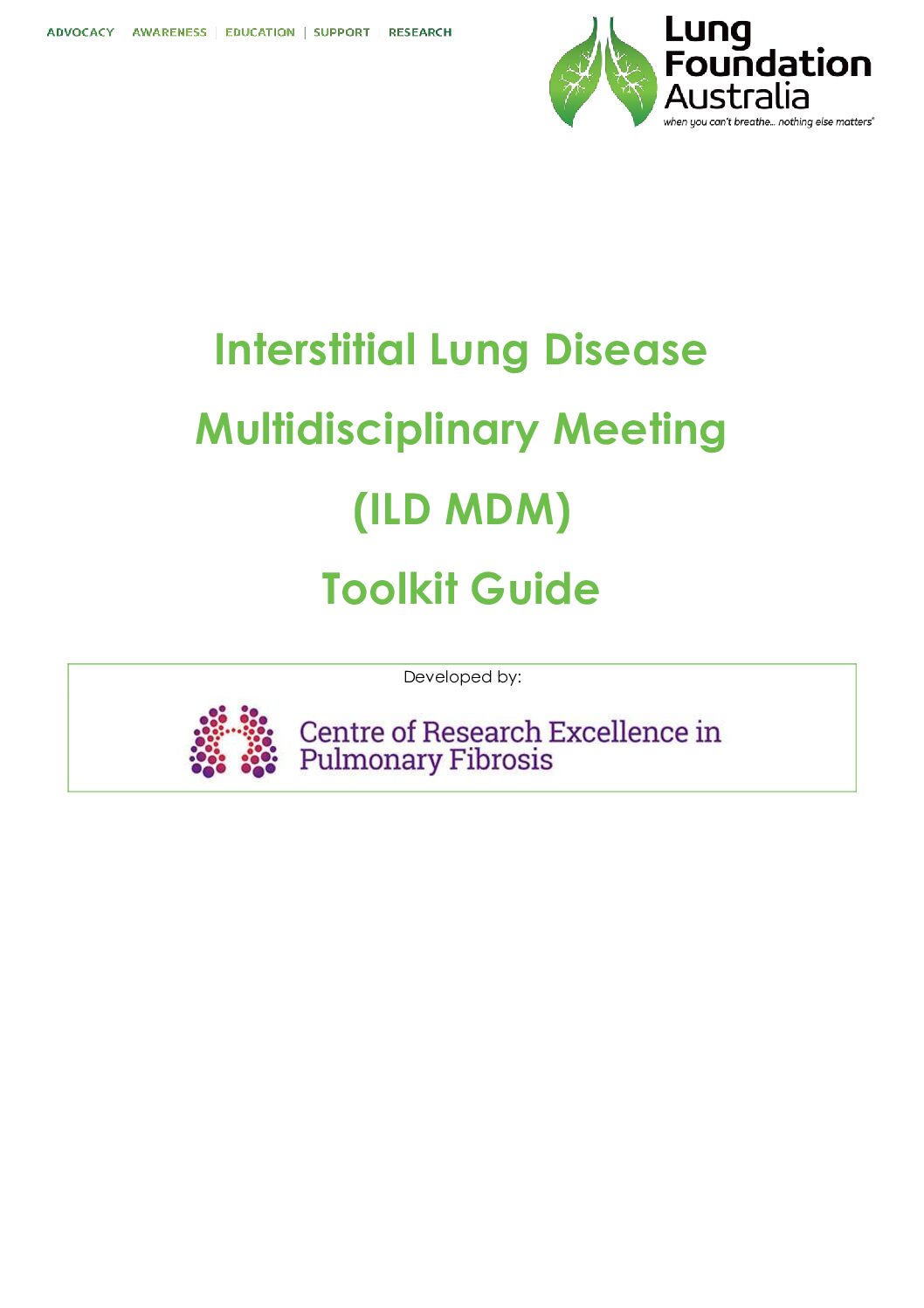The interstitial lung disease multidisciplinary meeting (ILD MDM) toolkit is a comprehensive resource developed in collaboration with the Centre of Research Excellence in Pulmonary Fibrosis (CRE-PF). The toolkit contains materials that are designed to aid in the presentation and discussion of cases at interstitial lung disease (ILD) multidisciplinary meetings (MDM). The toolkit content can be saved for local use or used as an example to aid in the preparation of tailored templates.
The interstitial lung disease multidisciplinary meeting (ILD MDM) toolkit guide:
This document provides an overview of the toolkit contents and instructions on how the toolkit and its contents are designed to be used.
Additional toolkit contents
The interstitial lung disease multidisciplinary meeting (ILD MDM) hospital worksheet:
The ILD MDM hospital worksheet is designed to provide an easy to use method for recording ILD MDM meeting discussions and outcomes and to make sure data collection is consistent.
The interstitial lung disease multidisciplinary meeting (ILD MDM) diagnostic labels and resources:
This document provides a list of common diagnostic labels, research labels and useful references that provide either consensus guidelines or expert guidance for conditions commonly presenting to the interstitial lung disease multidisciplinary meeting. References to other diagnostic and management resources are also included.
The interstitial lung disease multidisciplinary meeting (ILD MDM) letter:
The ILD MDM template letter is designed to report the ILD MDM decisions and outcomes. The letter covers the diagnosis, diagnostic confidence, differential diagnoses, a management plan, and follow up plans.
The interstitial lung disease multidisciplinary meeting (ILD MDM) slide presentations:
These ILD MDM slide presentations can be used to standardise the presentation of clinical data within and between meetings in order to reduce biases created by differences in data input to discussion.
Two example templates are provided; the single slide format, and the three slide format. These slides vary principally on the number of slides used to present clinical data.
For further information contact our Information and Support Centre on 1800 654 301.
Was this page helpful?
Good job! Please give your positive feedback
How could we improve this post? Please Help us.




